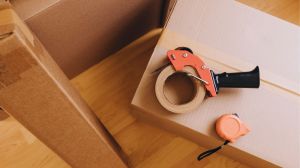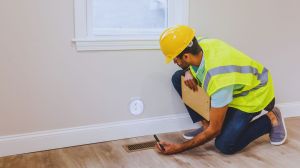Piano Movers:
Why Specialty Moving Services Matter for Heavy or Fragile Items
Pianos are among the most difficult household items to relocate. They are heavy, fragile, expensive and structurally complex. A single mistake during a move can result in costly damage to the instrument or injury to the movers. While many homeowners are tempted to rely on general moving services, piano moving requires a higher level of planning, equipment and handling skill. We’ll explain why specialty moving services are the better choice and how they address the challenges unique to these large instruments.
Why Piano Moving Requires Specialized Skills and Equipment
Moving a piano isn’t just about weight. Upright and grand pianos often exceed 300 to 1,000 pounds, but that weight is unevenly distributed across sensitive components. The soundboard, strings, pedals, and keys all require careful protection. Moving these instruments through staircases, tight corners, or uneven floors adds physical and logistical risk. Environmental conditions like temperature and humidity shifts can further complicate the process, especially during long-distance or outdoor moving services.
Specialty moving services are trained for handling items that are either unusually large, fragile or valuable. In the case of pianos, they bring experience with specific instrument types, such as baby grands, uprights or digitals. They also use protective padding, straps, dollies and custom ramps. Beyond equipment, they offer logistical foresight such as mapping out doorways, checking stair load-bearing capacity and planning disassembly or hoisting if necessary. Their goal is to minimize shock, pressure and friction during every stage of the move. These are not your average piano movers because they come prepared.
How Much Do Piano Movers Cost?
Moving costs vary based on several factors. These include the type of piano, the distance of the move and the difficulty of access. For local moves, expect to pay between $250 and $750. Long-distance or complex moves can exceed $1,000. When asking how much do piano movers cost, get a written estimate. Some specialty moving services offer flat rates, while others bill hourly. Always ask what’s included in the quote. This should cover labor, equipment, travel time, stairs, elevator use, disassembly, reassembly and protective materials like padding or straps.
How to Choose the Right Piano Mover
Ask About Piano Type Experience
Start by finding out exactly what kinds of pianos they’ve handled. Uprights, grands and digital hybrids each require different handling techniques. Piano movers should be able to describe how they approach different models, like what parts they remove, how they protect the soundboard, and how they maintain balance during transit. If their experience is limited to only one type, they may not be prepared for unexpected complications.
Understand Their Moving Process
A good mover will explain their plan clearly. Ask how they secure the piano before lifting, what materials they use for wrapping, and how they manage doorways, staircases and inclines. Confirm that they use padded blankets, straps that won’t leave marks and equipment made specifically for piano transport, such as skid boards or four-wheel dollies. If they don’t mention using ramps or protective floor padding, that’s a red flag for any moving services.
On-Site Inspection Policy
Some of the best piano movers insist on a pre-move site visit. This allows them to assess door clearances, elevator sizes, floor strength and any special equipment needed. A mover who offers this shows they’re serious about preparation. It also helps avoid surprise charges or complications on move day.
Check for Professional Credentials
Specialization matters. Movers with a history of working for music schools, recital halls, or professional studios are more likely to handle instruments with the care they deserve. Check for proper licensing, active insurance policies and any professional affiliations with piano manufacturers or transport networks.
Contingency Planning
Ask what happens if something goes wrong, like if the piano doesn’t fit through a hallway, if there’s unexpected construction or if access is blocked. Reliable specialty moving services have backup plans like temporary disassembly, alternate access routes, or even hoisting via a window if needed.
Staff Training and Supervision
Ask whether the movers on-site are full-time employees or temporary labor. Piano moves require coordinated effort, not just strength. The best teams include at least one person trained specifically in piano handling, not just general moving services. Some companies rotate supervisors or senior staff to oversee delicate moves.
Storage Capabilities (If Applicable)
If your move involves interim storage, ask if the facility is climate-controlled and secure. A piano sitting in a non-insulated warehouse for even a few weeks can develop tuning problems or physical damage due to moisture and temperature swings. When comparing options and asking how much do piano movers cost, include storage as part of the total service plan.
Look for Real Referrals
Don’t rely solely on website testimonials. Ask for recent client contacts or look for feedback from music teachers, local piano tuners or instrument repair professionals. If possible, choose someone recommended by people in the music community.
After the Move: Care and Tuning
Once the piano is relocated, it should be left alone for several days to acclimate to the new environment. This reduces the chance of internal stress from temperature or humidity changes. Avoid placing it near heating vents, windows or direct sunlight. After a week or two, schedule a professional tuning. The move may have affected string tension or hammer alignment, even if no physical damage is visible. A quick inspection can prevent long-term performance issues. It’s another reason why hiring professional piano movers is worth the cost.
Specialty Movers: Not Just for Pianos
Specialty moving services handle a wide range of items beyond pianos. These include safes, antique furniture, oversized appliances, sculptures and lab equipment. Any item that is heavy, awkward to lift or sensitive to pressure should be treated with the same attention. They often provide crating services, lifting equipment and climate-controlled transportation.
Buying or selling a home? At REMAX, we help you price it right, stage it well, and market it effectively. For buyers, we offer local insights, property comparisons and guided support. Whether you’re moving across town or across the country, our team keeps the process clear and focused.









